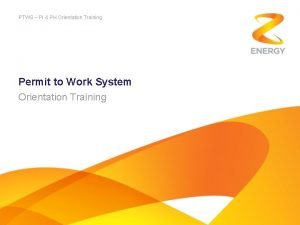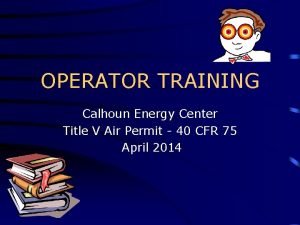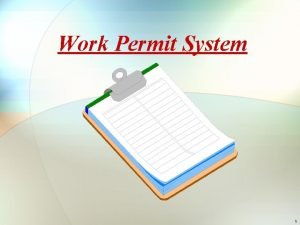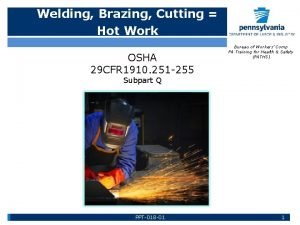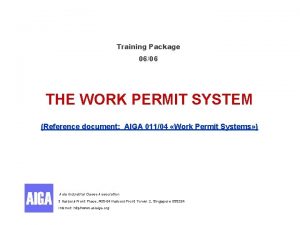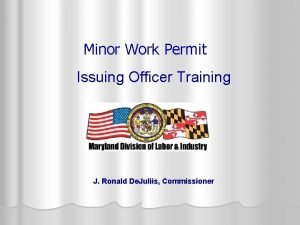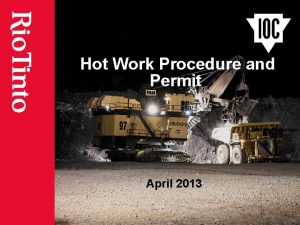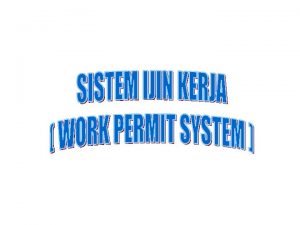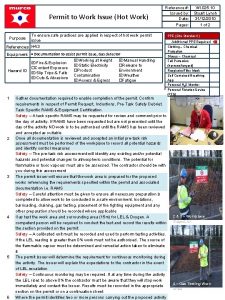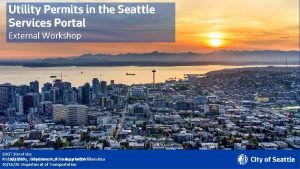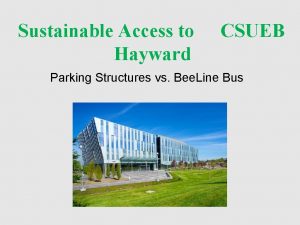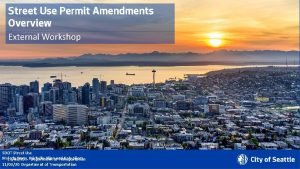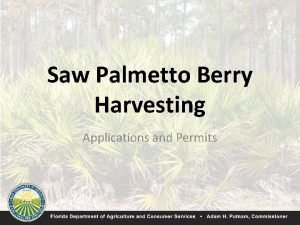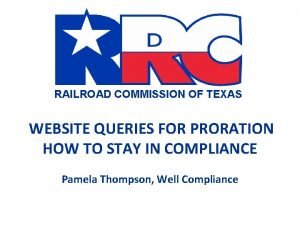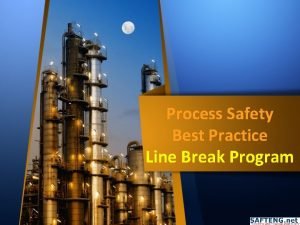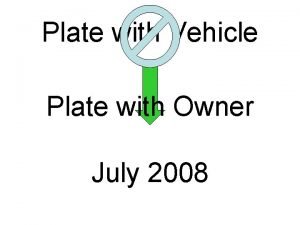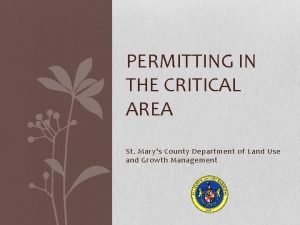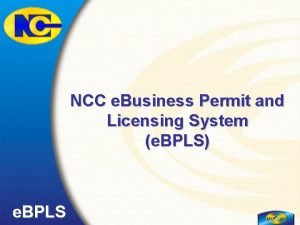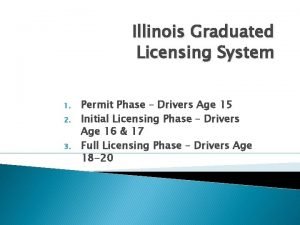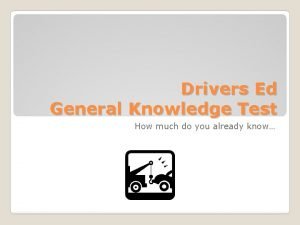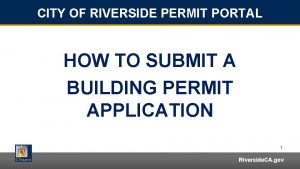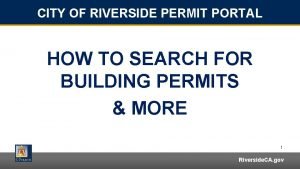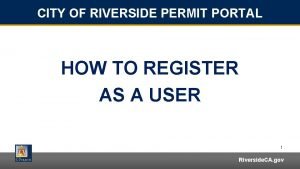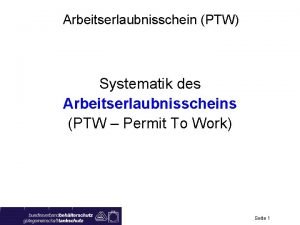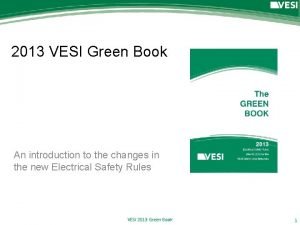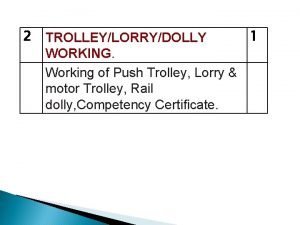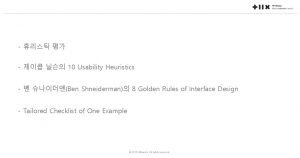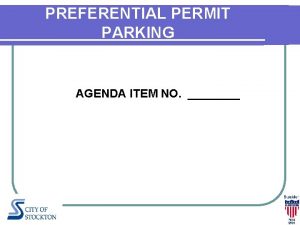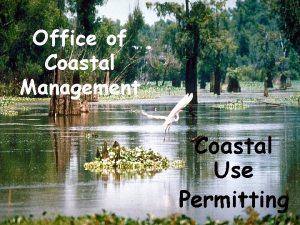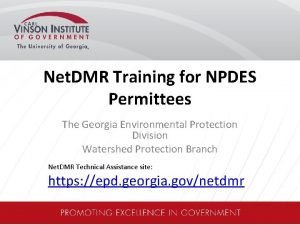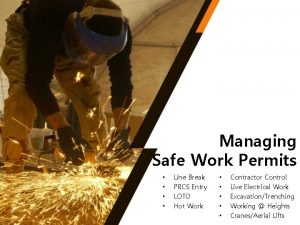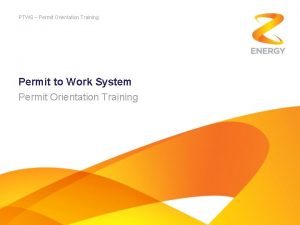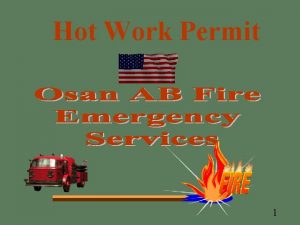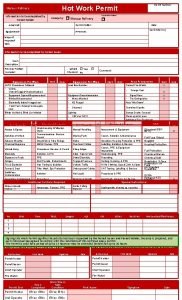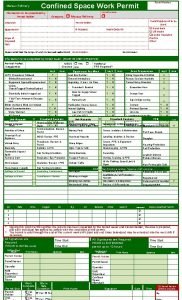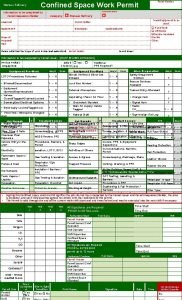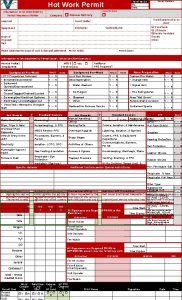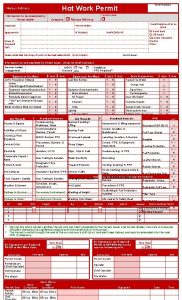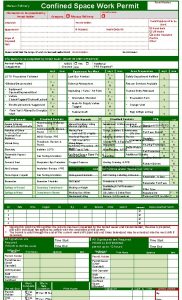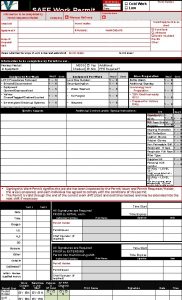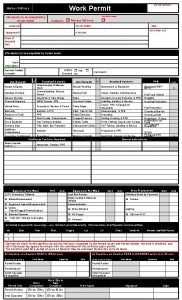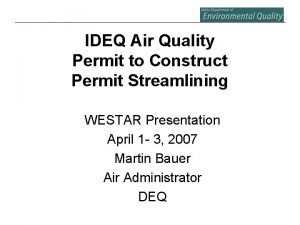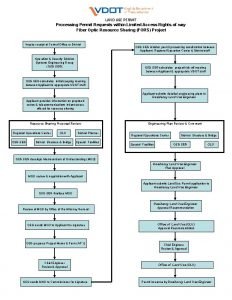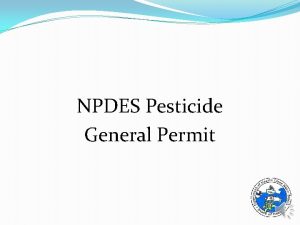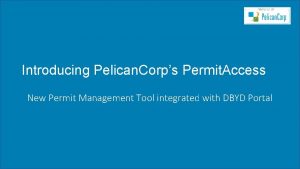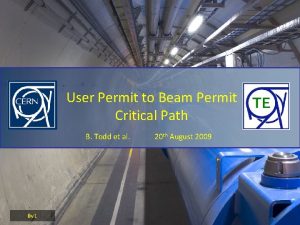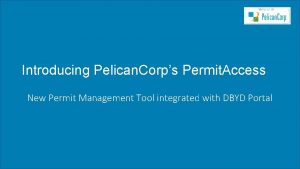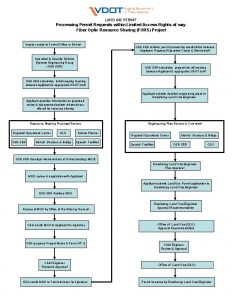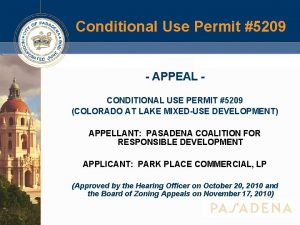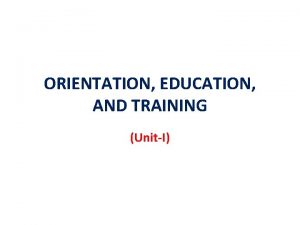PTWS PI PH Orientation Training Permit to Work







































- Slides: 39

PTWS – PI & PH Orientation Training Permit to Work System Orientation Training

Typical work at our site Introducing: • Sue – who has come to repair the toilet at Z Mana • Fred – who has come to install new electrical socket at Z’s office • Jack – who has come to install a tank for a new site at Z Clevedon • Lisa – who has come to drop off tobacco at Caltex Russley PTW System – PI & PH Orientation Training

PTWS – Why? At Z, we reckon everybody should work safely so we can all go home safely. Our Permit to Work System (PTWS) provides an effective means to manage our work activities in a safe manner and prevent harm to people and the environment. Z’s Permit to Work System: - is a critical HSSE risk management tool - supports Z’s HSSE Stand commitments - is focused on the specific risks of Z work activities and our work environments PTW System – PI & PH Orientation Training

PTWS Requirements The PTWS is: • Risk focused • Specific to Z work activities • Specific to Z site environments The core of Z’s PTWS is to ensure risks are: - identified, - risk assessed, - controls established (using the hierarchy of controls), and - work undertaken by competent people PTW System – PI & PH Orientation Training

PTWS Requirements STOP WORK Authority All Z employees, site representatives, contractors and workers, are authorised to intervene and stop the work if there is a HSSE concern. Z will back you 100% The PTWS requirements - with effect 1 April 2016. PTW System – PI & PH Orientation Training

PTWS– Other HSSE Z policies/systems/rules for HSSE: These include: - ZORM (Z’s Operational Risk Management) framework - Life Saving Rules - Working at height policy - Contractor prequalification and accreditation system - Site specific rules (e. g. Ch airport depot, Retail sites, construction sites); Standard Operating Procedures - Permit to work system All workers are required to comply with all regulatory requirements and Z policies/systems/rules. PTW System – PI & PH Orientation Training

Z’s Life Saving Rules PTW System – PI & PH Orientation Training

PTWS Applicability • Applies to all workers conducting work for and on behalf of Z on premises operated by Z • The PTWS is mandatory and applies to all work identified as potentially hazardous, including non-routine work being completed at workplaces under Z operational control including: - Retail Sites - Mini Tanker Zee sites - work conducted under a Z construction contract, or - when working on Z owned equipment at sites owned or operated by others • A permit is required for all high risk activities 1. 1 High risk activities are defined in Z’s PTWS manual

Non-routine Work - Work that is NOT performed regularly in a controlled environment with an approved Standing Operating Procedure or equivalent document. For example non-routine work is a work activity that is, but not limited to, any of the below: • Performed infrequently • Outside of normal duties • Does not have an approved standing operating procedure • Performed in a different way from the standing operating procedure • Has never been performed before PTW System – PI & PH Orientation Training

Roles • General Manager – HSSE – overall owner of PTWS , accountable to ensure sufficient resources to enable the PTWS is implemented effectively • HSSE Operations Manager – PTWS custodian, responsible for maintaining and confirming the implementation of this PTWS • PTWS Orientation Trainer – manages and provides PTWS training • PTWS Administrator – responsible for administering documents, records, PTWS website • Senior Permit Issuer –monitors operational performance of the PTWS • Authorised Gas Tester – tests and confirms the environmental working condition is safe to work in • Site Representative - the site person who confirms the site environment is safe for the contractor to work, provide updates on site hazards and conducts any site inductions. Signs contractors on and off site again via the sign-in register and the Work Clearance Form (WCF) e. g. Retail Site member, Z office member, Construction Site Manager PTW System – PI & PH Orientation Training

Roles • Permit Issuer - prepares, authorises and issues the Permit to Work Primary responsibility - By signing the permit the Permit Issuer agrees that they have reviewed and discussed the work scope and required documentation with the Permit Holder, and identified any hazards they are aware of in the permit • Permit Holder – ensures the permit requirements are put in practice; taking all necessary steps to perform the work in a safe and environmentally sound manner Primary responsibility - By signing the permit the Permit Holder agrees to comply by putting in place the permit and supporting document requirements and continuously supervising the work PTW System – PI & PH Orientation Training

Roles Matrix PTW System – PI & PH Orientation Training

Activity Risk Levels Work activities are categorised based on risk: Work requiring a permit • All High Risk Activities Work not requiring a permit • Medium Risk activities, • Low Risk activities, and • Deliveries Each risk category has different control measure requirements and is defined in Z’s PTWS manual PTW System – PI & PH Orientation Training

High risk activities Permits are required at all times for high risk activities described as: • Hot work in hazardous area • Confined space entry • Excavations and trenching >/= 1. 5 m • Live Electrical Work • Abnormal work or maintenance - overriding/disabling safety critical device • Hazardous substance exposure of high residual risk or greater • Energised high pressure system work to hydrant lines • Live Product Line Work • Work at height exceeding 1. 8 metres (refer exclusions) Continued on following slide PTW System – PI & PH Orientation Training

High Risk Activities High Risk activities (continued): • Shop roof construction and/or installation • Canopy construction and/or installation • Working on single skin canopy roof • Working on a non-trafficable secondary surface • Tank Removal and/or installation • Demolition – excluding soft strip out • Crane work – excluding standard stock deliveries • Any other activity that has a high or extreme residual risk • Any other activity as determined by Z senior management/permit issuer PTW System – PI & PH Orientation Training

Work not requiring a permit Permits are not required for the following works: Medium risk work: • Restricted Space • Excavations between 0. 5 metres and 1. 5 metres • High pressure system work to a compressed air system • Work at height 0. 5 metres or greater (excluding high risk activities) • Non powered hoist use involving a suspended load • Work off site in roadways • Work on electrical equipment and circuits • Erection of structures • Pump out of product from tanks Continued on following slide PTW System – PI & PH Orientation Training

Work not requiring a permit (continued) Medium Risk Activities (continued): • Drilling of monitoring wells or soil borings • Hazardous substance exposure of medium residual risk • Hot work outside of the hazardous zone • Any other risk that has a medium residual risk • Any other activity as determined by Z senior management/permit issuer Low Risk: • Any other activity deemed low risk using Z’s risk matrix Deliveries: • Delivery only services – drop off and pickup standard deliveries of stock PTW System – PI & PH Orientation Training

Work not requiring a permit still requires: • Completed work clearance forms • Hazard identification • HSSE risk assessment Appropriate control measures must be undertaken to eliminate or otherwise reduce HSSE risks PTW System – PI & PH Orientation Training

Documentation for the PTWS is available at www. z. co. nz/ptwinfo. • Work Clearance Form must be completed daily by all Contractors for all work prior to starting work • Safe Work Method Statement must be completed for Permitable activities – high risk prior to obtaining the permit • Job Safety Analysis or equivalent must be completed for Medium risk work prior to performing the work • Permit (permit to work) must be completed by the Permit Issuer for Permitable work. • Certificates where applicable must be used with a Permit PTW System – PI & PH Orientation Training

PTWS Documentation Work Clearance Form: • a process of daily hazard identification. Must be completed prior to any work starting • identifies any operational or site conductions that may impact on performing the work safely • designed to stop work or trigger the need for a permit if certain conditions are not met • completed by the contractor/worker performing the work in conjunction with the Z Site Representative for manned sites/offices Documentation for the PTWS is available at www. z. co. nz/ptwinfo. PTW System – PI & PH Orientation Training

Documentation Safe Work Method Statement • Identifies specific hazards and risks associated with tasks and details how these will be managed • Required for all high and medium rated work PTW System – PI & PH Orientation Training

Documentation Permit form • Describes the work being undertaken, tools to be used and hazards associated with the planned work • Issued for a particular task or activity • Identified controls to manage HSSE risks • Separate permit certificates are required to provide more information on certain tasks: - A – Hot Work Certificate - B – Confined Space Certificate - C – Work at Height - roofs, canopies and temporary structures - D – Excavation Certificate - E – Isolation Certificate - F – Tank Removal / Installation Certificate - G – Demolition Certificate - H – Overhead Crane Certificate PTW System – PI & PH Orientation Training

Z Risk Assessment Matrix

Hierarchy of controls The Hierarchy of controls is applied to manage the risks associated with the work being undertaken. Risks are managed in the following order of preference: 1. Eliminate the hazard e. g. by changing the work 2. Substitute e. g. change material/equipment to one with a less hazard, lower risk 3. Isolate the hazard e. g. by providing a form of barrier, or separation by time or space 4. Engineering Controls e. g. physical guards, structures, stop buttons 5. Administration Controls e. g. SWMS, procedures, training 6. PPE e. g. by providing personal protective equipment and clothing PTW System – PI & PH Orientation Training

Hierarchy of Fall Protection Controls Fall Protection hierarchy of controls for determining work at height control measures in order: 1. Eliminate the work at height e. g. by changing the work 2. Work from permanent guard rail; parapet 3. Work from temporary guard rail or elevating working platform (scissor lift/boom lift) 4. Work with fall restraint means - PPE 5. Work with fall arrest means - PPE PTW System – PI & PH Orientation Training

Permit Validity Permit is valid for: • a specific activity, site, within a specific period of time. • only issued for a maximum of 5 consecutive calendar days. - a 2 day extension maybe request and issued remotely. Conditions apply. • applied for in advance of the work – ideally 10 working days • issued immediately prior to the start of the high risk work • renewed via the Work Clearance Form each day by Permit Holder • expires after 5 days regardless of the activity Self Permits • No one is allowed to issue a Permit to themselves PTW System – PI & PH Orientation Training

Permit Validity Remote Permits A remote Permit can ONLY be issued if ALL of the following criteria is satisfied: - The PI has knowledge of the site or has reliable drawings and site data - The PI has a detailed knowledge of the task and activities to be permitted - The PI has experience working with the Contractor and individual PH. - The Z senior permit issuer or delegate confirms remote permitting is appropriate and the above criteria have been met. PTW System – PI & PH Orientation Training

Permit Validity Contractor Permitting • A PI may issue a Permit to another person in the same Contractor organisation. Blanket Permits • Blanket Permits are not permitted. Derogations and standard operating procedure approval • SOP more appropriate for repetitive, routine activities. • Refer to PTWS Manual for procedure to obtain derogation approval Changes in Conditions • Stop work and notify Permit Issuer PTW System – PI & PH Orientation Training

Training and Competency PTWS Training PTW System – PI & PH Orientation Training

Training and Competency Permit Issuer Training – additional activity recommendations PTW System – PI & PH Orientation Training

PTWS Documentation Available • For use by people external to Z - www. z. co. nz/ptwinfo • For internal use - http: //matters. gel. local/HSSE/Pages/Contractor-Management. aspx Other HSSE related requirements include: - ZORM - Z’s Operational Risk Management system - Life Saving Rules - Working at height policy – including hierarchy of fall prevention controls - External Accreditation procedures (via ISNet. World) - Site specific rules (e. g. Ch airport depot, Retail sites, construction sites); Standard Operating Procedures Contacts • Neil Moon – Senior Permit Issuer - Neil. Moon@z. co. nz • Jonathan – PTWS Orientation Trainer/ PTWS Administrator (and HSSE Business Partner – Projects) – jonathan. payne@z. co. nz • Any member of the HSSE Team PTW System – PI & PH Orientation Training

Typical work at our site Introducing: • Sue – who has come to repair the toilet at Z Mana • Fred – who has come to install new electrical socket at Z’s office • Jack – who has come to install a tank for a new site at Z Clevedon • Lisa – who has come to drop off tobacco at Caltex Russley PTW System – PI & PH Orientation Training

Tank installation

Tank installation

Tank installation

Tank installation

Tank installation

Tank installation

Tank installation
 Ptws meaning
Ptws meaning Ethnocentric polycentric geocentric
Ethnocentric polycentric geocentric Title v air permit training
Title v air permit training Work permit receiver responsibilities
Work permit receiver responsibilities Osha hot work standard
Osha hot work standard Permit to work procedure
Permit to work procedure Maryland minor work permit
Maryland minor work permit Permit to work procedure
Permit to work procedure Work authorization adalah
Work authorization adalah Permit to work purpose
Permit to work purpose Dbhds dsp orientation training
Dbhds dsp orientation training Gdl program
Gdl program Sdot permit portal
Sdot permit portal Csueb parking pass
Csueb parking pass Street use permit
Street use permit Tceq small construction site notice
Tceq small construction site notice Insaw propiedades
Insaw propiedades Rrc completions query
Rrc completions query Line break permit
Line break permit Seller's permit south dakota
Seller's permit south dakota St mary's county tree removal permit
St mary's county tree removal permit Ncc business permit
Ncc business permit Graduated license illinois
Graduated license illinois Permit easy reversal of actions
Permit easy reversal of actions Gups permit
Gups permit Fire permit fee
Fire permit fee An applicant for a learner's permit must score
An applicant for a learner's permit must score Riverside county permit portal
Riverside county permit portal Riverside permit portal
Riverside permit portal Riverside permit portal
Riverside permit portal Permit holder shell
Permit holder shell Vesi permit
Vesi permit Push trolley railway
Push trolley railway Shneiderman 8 golden rules
Shneiderman 8 golden rules Usfws designated ports
Usfws designated ports Uop parking permit
Uop parking permit Louisiana coastal use permit
Louisiana coastal use permit Nights away permit checklist
Nights away permit checklist Georgia npdes permit search
Georgia npdes permit search Line breaking permit
Line breaking permit
